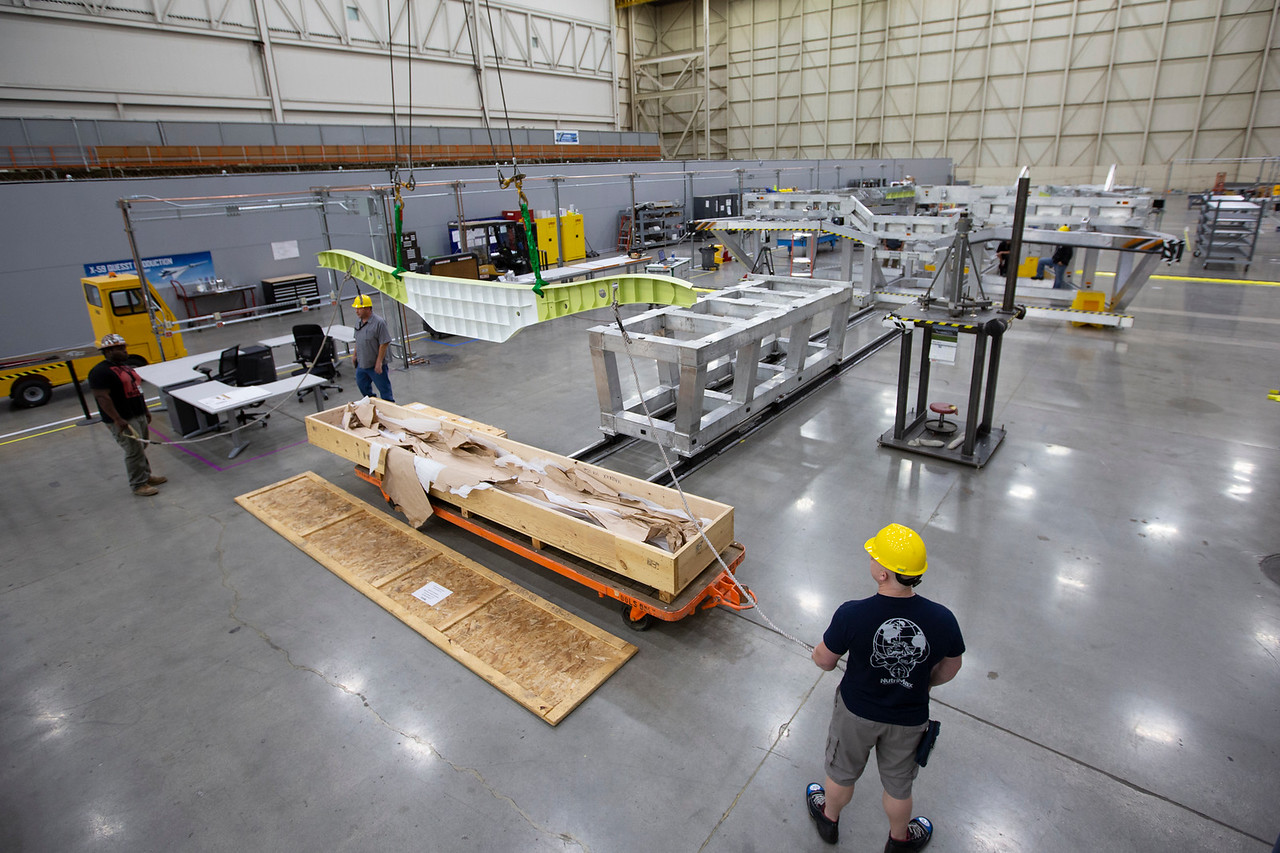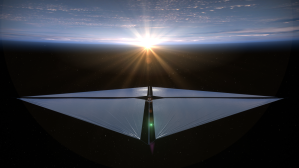Moving through the air with ease, the 29.5-foot wide swept wing maneuvers NASA’s new X-plane gracefully through the sky.
Before taking flight, NASA’s X-59 Quiet SuperSonic Technology, or QueSST, aircraft must undergo meticulous construction, starting with its wing.
Carefully crafted parts of the wing recently arrived at Lockheed Martin’s production facility in Palmdale, California, where the X-59 QueSST will continue to evolve until its first flight in 2021. NASA selected Lockheed Martin in April 2018 to design and build the aircraft.

“I’m happy with the progress we’re making and excited to see the aircraft starting to come together,” said Craig Nickol, NASA’s Low Boom Flight Demonstrator project manager.
The X-59 will never carry passengers, but it will likely kick off a new generation of quiet supersonic commercial planes that can fly over land and dramatically reduce the time it takes to get you across the U.S. and to other countries.
Existing restrictions only allow commercial supersonic aircraft to fly over the ocean because of the disruptive sonic boom heard by people on the ground. NASA wants to prove that commercial supersonic aircraft can fly over land without disturbing communities, which may lead to rule change and allow for supersonic flight over land.
An aircraft’s wing provides the force necessary to lift an aircraft into the air. In the case of the X-59, the wing will allow it to lift at altitudes up to 55,000 feet, and speeds up to 1.4 times the speed of sound or 940 mph.
Unlike conventional aircraft, the wing of the X-59 is designed to interact with other features of the aircraft, such as its long nose, top-mounted engine, and uniquely placed canards, to control the location and strength of shockwaves.
Shockwaves from the aircraft’s surfaces are the main culprit of the annoying sonic boom that can startle people and animals on the ground.
As an aircraft flies through the sky faster than the speed of sound, air ahead is unaware of the plane’s approach. When the aircraft passes through that air, pressure changes happen in an instant, forming shockwaves.
Somewhat similar to the wake from a boat, shockwaves move away from the aircraft and eventually merge behind the aircraft, producing a disruptive sonic boom to communities below. Conversely, the design of the X-59 prevents shockwaves from merging, which creates a thump sound, barely audible to people on the ground.
To prove the X-59 works as described, NASA will fly the aircraft within the supersonic test range over NASA’s Armstrong Flight Research Center and Edwards Air Force Base in California. Once the speedy aircraft shows it can safely perform as expected, NASA will fly the X-59 above select U.S. communities to gather data on the public’s response to the sound it produces on the ground.
“With these flight tests, we will be able to give U.S. and international regulators data needed to help lift bans on supersonic flight over land,” said NASA’s Low-Boom Flight Demonstration mission manager Peter Coen.
Aircraft manufacturers may choose to include sonic-boom suppressing technologies developed for the X-59 in future designs of commercial supersonic aircraft.
The end goal: make quiet supersonic flight over land possible for commercial airliners to bring you to your destination with time to spare.
By Sasha Ellis































